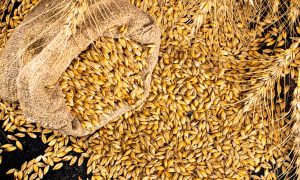Philippines : Insect pests attack sugarcane farms in northern NegOcc

The Sugar Regulatory Administration (SRA) is addressing a red-striped soft scale insect (RSSI) infestation in sugarcane farms in northern Negros Occidental. A task force was formed to control the spread and implement quarantine measures. Suspected to have spread from Luzon, the pest can reduce sugar content by 50%. Insecticide trials are ongoing with potential but unconfirmed solutions.
BACOLOD City – The Sugar Regulatory Administration (SRA) has taken measures to address the infestation of red-striped soft scale insects (RSSI) in sugarcane farms in northern Negros Occidental.
This comes after the reported RSSI infestation in six areas in the province’s northern part. The SRA said the infestation could reduce sugar content by almost 50 percent, increase production cost, and even threaten the stability of the sugar industry if left unchecked.
The SRA created a task force headed by SRA Board Member David Andrew Sanson to control the infestation and seek quarantine measures from the DA.
Sanson said the task force will also set up an Operation and Monitoring Center to document and report all RSSI and related issues around the country, and will facilitate coordination and consultation among SRA delivery units and partner agencies involved in the management of the RSSI.
For his part, SRA Administrator Pablo Luis Azcona said the infestation is suspected to have been brought to Negros from Luzon where an RSSI infestation has happened before and is still present in some farms.
RSSI, a newly emerging insect pest in sugarcane in the Philippines, was first observed in Bacolor, Pampanga in June 2022.
Sugar farmers have to be more vigilant where they purchase their cane points, said Azcona.
Sanson further appealed to farmers to “stop transporting planting materials from Luzon and other infected areas because it has been observed that transmittal of this disease came from He said that SRA also sought the help of the National Crop Protection Center (NCPC) at the University of the Philippines Los Baños, which facilitated the research and found at least five insecticides that may be able to limit the infestation.
Randolph Candano of NCPC, however, said that protocol dictates that they will need to conduct a second trial in a different location to further test the efficacy of the insecticides before they can even seek an emergency-use permit from the Fertilizer and Pesticide Authority (FPA), as “these insecticides are not yet registered for sugarcane.”
Based on their study, Buprofezin, Dinotefuran, Phenthoate, Pymetrozine, and Thiamethoxam have shown potential in curbing the spread. However, Candano said this is not conclusive until they conduct a second field trial in a different location.
Based on the NCPC assessment, Candano said the pest can spread to contiguous farms, and treating cane points with insecticides, especially if they are just piling on the fields, as RSSI has been found to thrive under the heat, can help reduce their numbers.
In response, Azcona said they will propose the conduct of the second trial in Negros Occidental, but will still push for quarantine of canes from infected areas for now.
He said the SRA cannot afford to have an infestation, as some farmers are already starting to plant their canes for the next crop year.
“We made a good showing this year despite the challenges brought about by the long drought and I hope we can maintain the momentum and even exceed our targets for next year if we will all help one another in containing this infestation,” Azcona stated./PN
To Read more about Sugar Industry continue reading Agriinsite.com
Source : Panay News














